How to Transition From Consumerism to Minimalism
Category: Lifestyle
Your Path to Simplicity Starts Here
If you've landed here, chances are you're tired of the endless cycle of buying, accumulating, and feeling overwhelmed by possessions. You may have started questioning the consumer-driven lifestyle that's been normalized around you. Whether you're a beginner curious about minimalism or someone already seeking clarity and fulfillment through simpler living, this guide offers practical, insightful steps to transition from consumerism to minimalism. We understand that breaking away from the habit of constant consumption isn’t just about decluttering your space; it involves reshaping your mindset, finances, and daily habits towards intentional living. You want actionable advice with empathy for the challenges you face, without jargon or unrealistic expectations. This post differs by focusing not only on reducing physical stuff but on creating a meaningful shift in values and lifestyle that enhances your well-being and clarity. Keep reading to discover how to embrace minimalism thoughtfully and sustainably, leaving behind consumerism’s noise and moving towards a life centered on what truly matters to you. Your journey to simplified living and renewed purpose begins now.
- Your Path to Simplicity Starts Here
- Understanding Consumerism: The Invisible Force Shaping Our Lives
- Identifying Your Why: The Foundation of Your Minimalism Journey
- Assessing Your Current Consumption Habits
- Setting Realistic Goals for Minimalism
- Practical Decluttering Strategies: Step-by-Step Methods to Reduce Physical Clutter
- Adopting Mindful Consumption: Prioritizing Quality, Need, and Sustainability
- Building New Habits and Routines: Cultivating Practices That Support Minimalism
- Navigating Social and Emotional Challenges: Overcoming Barriers to Minimalism
- Sustaining Minimalism Long-Term: Strategies for Maintaining Minimalist Principles Amidst Life Changes
- Finding Community and Inspiration: Connecting with Minimalist Communities to Stay Motivated
Understanding Consumerism: The Invisible Force Shaping Our Lives
Before you can truly transition to minimalism, it’s essential to understand what consumerism is and how deeply it influences modern society. At its core, consumerism is an economic and cultural system that encourages the continual acquisition of goods and services in ever-increasing amounts. Far beyond simply meeting needs, it thrives on creating desires—tapping into psychological triggers that make us equate happiness, status, and identity with material possessions.
Psychological Triggers Driving Overconsumption
Consumerism exploits several powerful psychological mechanisms that drive us to buy more than we really need:
- Instant Gratification: The surge of dopamine we get from purchasing new items provides a temporary emotional high, making it tempting to seek that feeling repeatedly.
- Fear of Missing Out (FOMO): Advertising and social media fuel anxiety that we’re missing experiences or products others have, pushing us to consume to “keep up.”
- Identity and Social Validation: Brands and products often become symbols of belonging or success, prompting purchases as a way to express ourselves or gain approval.
- Emotional Comfort: Shopping can be a coping mechanism for stress or boredom, further deepening our consumption habits.
Social Pressures that Perpetuate Overconsumption
Consumerism isn’t just a personal struggle; it’s reinforced by society at large through:
- Norms and Expectations: Celebrations, holidays, and milestones are commercialized, framing consumption as essential.
- Advertising Saturation: With ads everywhere—from billboards to social media feeds—constant exposure normalizes and encourages buying.
- Peer Influence: The pressure to maintain an image or lifestyle “on par” with friends and colleagues can lead to excessive spending.
- Planned Obsolescence: Many products are designed to become outdated or break down, compelling consumers to replace items often.
By recognizing these psychological and social influences, you gain clarity about why breaking free from consumerism is challenging but achievable. This insight is a key foundation for embracing minimalism—not as a restrictive lifestyle but as a conscious choice to reclaim your time, money, and mental space from the grip of overconsumption. With awareness, you can begin to identify and resist the subtle forces pushing you toward unnecessary buying, making minimalism a natural and sustainable path forward.
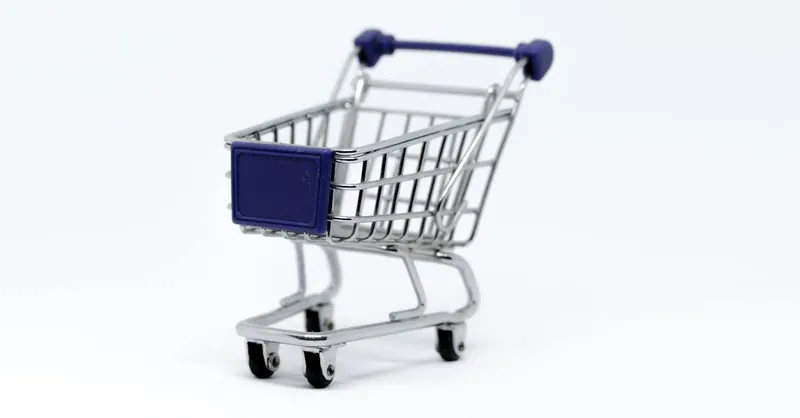
Image courtesy of emirkhan bal
Identifying Your Why: The Foundation of Your Minimalism Journey
Transitioning from consumerism to minimalism is a deeply personal journey, and the most sustainable change begins with clarity about your core motivations. Understanding why you want to simplify your life helps you stay focused and resilient when faced with societal pressures or moments of doubt. Minimalism isn’t about deprivation; it’s about intentionally choosing what adds value and meaning to your life.
Take some time to reflect on your motivations, which may include:
-
Reducing Stress and Mental Clutter: Constantly managing excess possessions and financial obligations can create anxiety. Minimalism invites mental peace by clearing physical and emotional overload.
-
Gaining Financial Freedom: Letting go of impulsive purchases and unnecessary items frees up money for experiences, savings, or investments aligned with your true priorities.
-
Seeking Greater Meaning and Purpose: Many find that minimalism uncovers space to focus on relationships, creativity, or personal growth instead of chasing material goods.
-
Improving Environmental Impact: Minimal living supports sustainability by encouraging mindful consumption and reducing waste.
-
Creating More Time and Freedom: Less maintenance of belongings means more time for activities that nourish you and fewer distractions.
By identifying your personal ‘why,’ you equip yourself with a powerful touchstone to guide decisions and avoid falling back into consumer habits. Write down your motivations and revisit them regularly—they serve as your compass for embracing minimalism with intention and authenticity. This self-awareness transforms minimalism from a trend or obligation into a meaningful lifestyle anchored in your unique values.
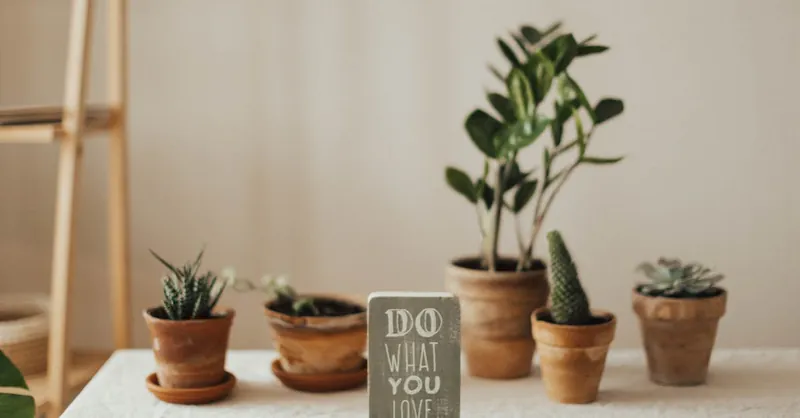
Image courtesy of Valeria Ushakova
Assessing Your Current Consumption Habits
The first actionable step toward transitioning from consumerism to minimalism is gaining a clear understanding of your current spending, shopping behaviors, and possessions. Without assessing where you stand, it’s difficult to identify patterns that fuel overconsumption or recognize areas ripe for change. This self-assessment creates a baseline, empowering you to make intentional choices that reduce clutter and consumer impulses sustainably.
How to Track and Analyze Your Spending
- Keep a Spending Journal: For at least two weeks, write down every purchase—no matter how small. Include item costs, where you bought it, and what motivated the purchase.
- Use Budgeting Apps or Tools: Digital tools like Mint, YNAB, or simple spreadsheets can automatically categorize spending to reveal where your money goes most.
- Review Bank and Credit Card Statements: Look for recurring expenses and impulse buys. Notice if certain categories like clothing, dining out, or gadgets dominate your budget.
- Reflect on Emotional Triggers: Identify if stress, boredom, or social pressure influences specific purchases.
Examining Your Possessions and Shopping Behaviors
- Inventory Your Belongings: Take stock of your clothes, gadgets, home goods, and other possessions. Note how often you use items versus those gathering dust.
- Assess Shopping Frequency: Track how frequently you shop online or in-store and whether these trips align with actual needs or habits.
- Recognize Patterns: Are you buying to fill emotional voids, keep up appearances, or respond to marketing gimmicks? Identifying these trends brings awareness crucial to breaking the cycle.
By thoroughly assessing your consumption habits, you illuminate unseen habits and spending blind spots—key insights that will guide targeted, effective steps toward minimalist living. This process also cultivates mindfulness, helping you resist impulsive acquisitions and prioritize what truly adds value to your life. With this foundation, you can move forward confidently, making smarter, intentional choices that simplify your lifestyle and restore freedom from consumerism’s grip.
Image courtesy of Ahsanjaya
Setting Realistic Goals for Minimalism
Transitioning to minimalism is a meaningful shift that requires setting achievable and personalized goals to ensure lasting success. Unrealistic expectations or all-at-once transformations can lead to overwhelm and discouragement. Instead, focus on small, intentional steps that align with your lifestyle, values, and unique motivations identified previously. Effective minimalism goals center around three core areas: intentional buying, thoughtful decluttering, and cultivating lifestyle simplicity.
How to Create Achievable Minimalism Goals
- Start with Intentional Buying Habits
Set clear rules for yourself to curb impulse purchases and promote mindful consumption. For example, commit to: - Waiting 24 hours before making non-essential purchases.
- Asking if the item fulfills a practical need or enriches your life meaningfully.
-
Researching product quality and sustainability before buying.
-
Plan Manageable Decluttering Sessions
Breaking down decluttering into focused, time-limited sessions can prevent burnout. Consider goals like: - Decluttering one category (e.g., clothes, books) per week.
- Spending 15–30 minutes daily removing unused or duplicative items.
-
Setting a target number of items to donate or recycle each month.
-
Simplify Lifestyle Practices Gradually
Simplify routines and commitments by prioritizing what truly matters to you. Goals could include: - Reducing subscriptions and memberships to only essentials.
- Establishing a daily mindfulness or gratitude practice to reinforce intentional living.
- Limiting digital clutter by unsubscribing from unnecessary emails and organizing digital files.
Tailoring Goals to Your Personal Journey
Remember, minimalism is not a one-size-fits-all formula. Your goals should reflect your individual pace, values, and living situation to create sustainable change. Use your “why” as a guide to prioritize which areas to focus on first and adapt goals as you grow. Regularly reviewing and celebrating milestones—even small wins—will keep motivation high and foster a positive, empowering relationship with minimalism.
By establishing realistic and personalized minimalism goals, you embrace a thoughtful approach to simplifying your life that overcomes consumerist patterns gently yet effectively. This intentional groundwork ensures your transition is not just about less stuff but about cultivating clarity, freedom, and a deeper sense of fulfillment.
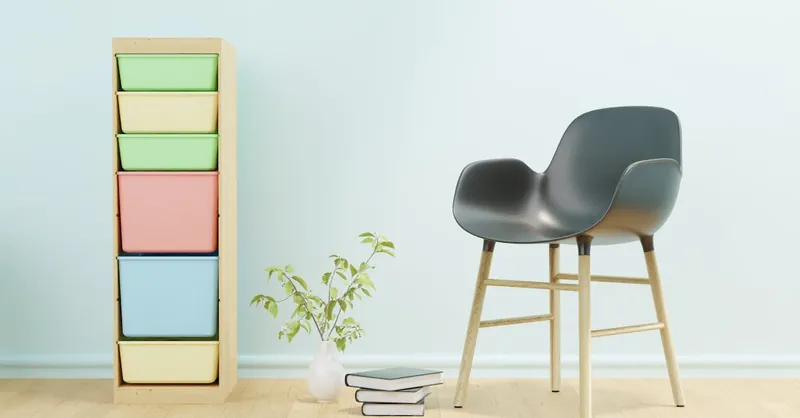
Image courtesy of dada _design
Practical Decluttering Strategies: Step-by-Step Methods to Reduce Physical Clutter
One of the most transformative stages in transitioning from consumerism to minimalism is practical decluttering—the intentional process of assessing your belongings and releasing what no longer serves you. Effective decluttering doesn’t have to be overwhelming or rushed; by breaking it into manageable steps, you create a sustainable routine that clears physical clutter and fosters mental clarity.
Step 1: Sorting with Purpose
Begin by categorizing your possessions into clear groups such as clothes, books, kitchenware, and sentimental items. Within each category, sort items into four distinct piles:
- Keep: Items you use regularly and genuinely add value to your life.
- Donate: Good-condition belongings that can benefit others.
- Sell: Valuable items that no longer fit your lifestyle but can provide financial returns.
- Dispose Mindfully: Broken, worn out, or unusable goods that require recycling or responsible disposal.
This initial sorting helps you see your possessions objectively and reduces decision fatigue by narrowing choices gradually.
Step 2: Donating and Selling with Intention
Giving your unwanted items a second life through donation or selling aligns perfectly with minimalist values of sustainability and generosity. Choose trusted charities or community organizations where your donations will have meaningful impact. Selling through local marketplaces, online platforms, or consignment shops can not only recoup some costs but also motivates careful evaluation of what to part with.
Step 3: Mindful Disposal Practices
For belongings beyond reuse, adopt mindful disposal methods that minimize environmental harm:
- Recycle electronics, paper, and plastics following local guidelines.
- Compost organic waste when possible.
- Avoid landfill-bound disposal by seeking specialized recycling centers for items like batteries or hazardous materials.
Step 4: Creating Daily Decluttering Rituals
To maintain your simplified space, integrate small daily habits such as:
- Setting a timer for 10–15 minutes of decluttering each day.
- Applying the “one in, one out” rule to prevent new clutter.
- Regularly reassessing your belongings seasonally to stay aligned with your minimalist goals.
By implementing these structured decluttering strategies, you not only reduce physical clutter but also reinforce mindful consumption patterns, ultimately supporting your transition from consumerism to a simplified, intentional lifestyle that prioritizes what truly matters.
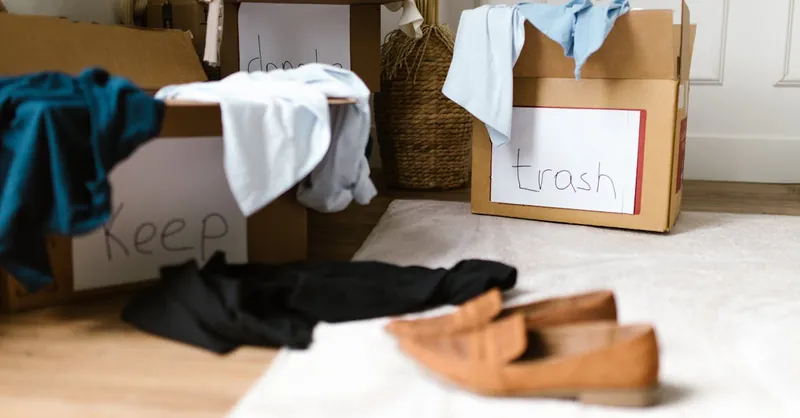
Image courtesy of RDNE Stock project
Adopting Mindful Consumption: Prioritizing Quality, Need, and Sustainability
A crucial pillar in your transition from consumerism to minimalism is adopting mindful consumption—making deliberate purchasing decisions that emphasize quality, genuine need, and sustainability rather than impulse or abundance. Mindful consumption shifts the focus from accumulating more items to choosing fewer, better things that truly enhance your life and align with your values. This approach not only reduces clutter but also fosters financial health and environmental responsibility.
Principles of Mindful Consumption
-
Evaluate True Need vs. Want
Before any purchase, ask yourself: Does this item solve a problem or fulfill an essential need? Distinguishing needs from wants prevents unnecessary acquisition and supports purposeful living. -
Prioritize Quality Over Quantity
Invest in well-made products designed to last longer rather than cheap, disposable alternatives. Quality craftsmanship often means fewer replacements, less waste, and overall greater satisfaction. -
Consider Sustainability and Ethical Impact
Support brands that practice environmental stewardship and fair labor. Choosing sustainable products reduces your ecological footprint and promotes a conscientious marketplace. -
Implement the 24-Hour Rule
To curb impulsive buying, introduce a waiting period (e.g., 24 or 48 hours) before committing to a purchase. This pause allows for reflection and usually reveals whether the item is truly necessary. -
Embrace Multi-Functionality and Versatility
Select items that serve multiple purposes or can adapt to various needs, helping to minimize the number of possessions while maximizing utility.
Benefits of Mindful Consumption in Minimalism
- Reduces Overwhelm and Clutter: By buying less and buying intentionally, your living space remains clear, promoting peace and focus.
- Encourages Financial Wellness: Mindful spending shifts your budget toward meaningful investments instead of fleeting trends, enabling greater savings and freedom.
- Supports Environmental Sustainability: Conscious purchasing helps decrease excessive waste and resource depletion, aligning your lifestyle with eco-friendly practices.
- Enhances Satisfaction and Appreciation: Choosing thoughtfully leads to deeper contentment with your belongings, counteracting the dissatisfaction often caused by overconsumption.
By embedding mindful consumption at the heart of your minimalist journey, you cultivate a balanced, intentional relationship with possessions—one that respects your values, sustains your well-being, and honors the planet. This mindset change empowers you to confidently resist consumerist pressures, ensuring every purchase truly earns its place in your simplified life.
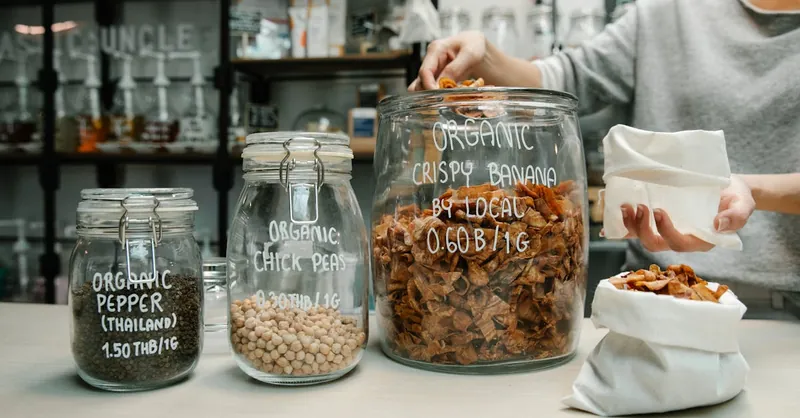
Image courtesy of Sarah Chai
Building New Habits and Routines: Cultivating Practices That Support Minimalism
Successfully transitioning from consumerism to minimalism involves more than decluttering and conscious purchasing—it requires building new habits and routines that reinforce your values daily. Establishing intentional rituals like digital detoxes, budgeting, and effective time management helps embed minimalism into your lifestyle, making simplified living sustainable and fulfilling over the long term.
Digital Detoxes: Reclaiming Mental Space from Consumer Noise
In an era of constant digital stimulation, habits like regular digital detoxes are essential to counteract consumerist messaging embedded in social media, advertising, and notifications. Scheduling dedicated offline time—whether it’s an hour each day or a full day per week—allows you to reconnect with the present moment, reduce impulse buying triggers, and foster mindfulness. To start:
- Set clear boundaries by turning off non-essential notifications.
- Replace screen time with enriching offline activities, such as reading, journaling, or outdoor walks.
- Declutter your digital environment through unsubscribing from marketing emails and organizing files.
Digital detoxes not only improve your mental clarity but also reduce the subconscious pressure to consume, strengthening your minimalist mindset.
Budgeting: Aligning Finances with Minimalist Intentions
A purposeful budgeting routine serves as a powerful tool in breaking free from consumerism. By tracking income and expenses, you gain control over where your money flows and reinforce spending aligned with your minimalist goals. Implement these budgeting tips:
- Use simple apps or spreadsheets to categorize expenses and identify unnecessary spending.
- Allocate funds intentionally toward experiences, savings, or essentials rather than material goods.
- Schedule regular budget reviews to adjust spending habits and celebrate progress.
Budgeting increases your financial awareness, supporting mindful consumption and helping you avoid impulsive purchases that undermine minimalism.
Time Management: Prioritizing What Truly Matters
Minimalism is also about reclaiming time as a valuable, non-renewable resource. Effective time management empowers you to focus on meaningful activities rather than busyness driven by consumer culture. Consider these practices:
- Plan daily and weekly schedules centered on priorities like relationships, creativity, or self-care.
- Learn to say no to commitments that don’t align with your minimalist values.
- Incorporate routines such as morning mindfulness or evening reflection to maintain intentional living.
By managing time mindfully, you reduce stress and create space for the experiences and connections that enrich life, making minimalism an integrated lifestyle rather than a temporary project.
Anchoring Minimalism Through Habitual Change
Building and sustaining these habits—digital detoxes, budgeting, and time management—forms the backbone of a minimalist lifestyle. Each practice supports mental clarity, financial freedom, and purposeful living, helping you resist consumerism’s pull and cultivate lasting simplicity. Begin with small, consistent changes and allow these routines to grow organically, creating a resilient foundation for your transformation toward intentional, fulfilling minimalism.
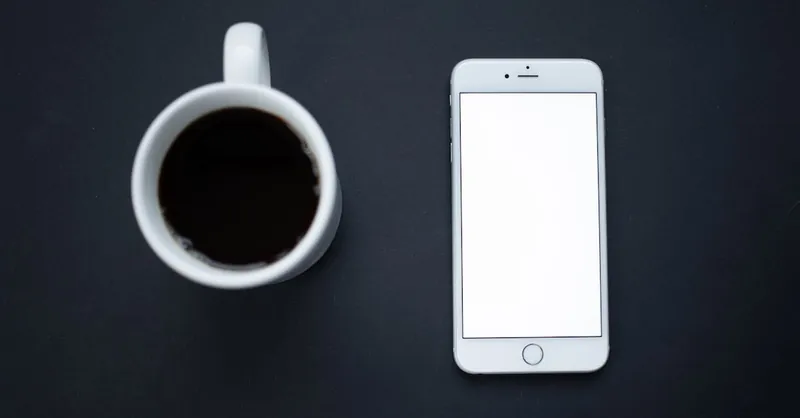
Image courtesy of KATRIN BOLOVTSOVA
Navigating Social and Emotional Challenges: Overcoming Barriers to Minimalism
Transitioning from consumerism to minimalism often means confronting social pressures, emotional attachments, and the pervasive fear of missing out (FOMO), which can significantly hinder your progress. Recognizing and addressing these challenges is vital to sustaining your minimalist lifestyle with confidence and peace.
Addressing Social Pressures and Expectations
- Breaking Free from External Validation: Consumer culture thrives on the idea that possessions equate to status or success, making social environments a hotbed for comparison and judgment. To resist these pressures, cultivate a strong sense of self rooted in your minimalist values rather than others’ opinions.
- Communicating Your Choice: Friends and family might not immediately understand your minimalist journey. Open, honest conversations about your intentions can foster support and reduce social friction.
- Curating Your Social Media: Since digital platforms amplify consumerist messages and trigger FOMO, intentionally following minimalist influencers and limiting exposure to ads can help realign your mindset.
Managing Fear of Missing Out (FOMO)
FOMO often drives impulsive purchases or social commitments that conflict with minimalist goals. Combat FOMO by:
- Reframing Fulfillment: Shift focus from external acquisitions or experiences to internal satisfaction derived from intentional living and gratitude.
- Selective Engagement: Choose social activities and purchases that genuinely enrich your life, rather than trying to keep up with every trend or event.
- Mindful Reflection: When faced with the urge to buy or participate out of fear of missing out, pause and evaluate if it aligns with your personal values and long-term minimalism goals.
Overcoming Emotional Attachments to Possessions
- Understanding Emotional Clutter: Many possessions carry sentimental value or serve as emotional anchors. While minimalism doesn’t require discarding all memories, identifying items that no longer serve your wellbeing is crucial.
- Creating Meaningful Rituals: Instead of holding onto items out of obligation or guilt, develop rituals such as photographing treasured objects before donating or journaling about their significance to allow intentional release.
- Gradual Detachment: Letting go is a process. Commit to incremental steps, honoring your emotions without letting them derail your minimalist path.
By acknowledging the social and emotional dimensions of your transition, you equip yourself with resilience and clarity. This awareness allows you to navigate external pressures and internal conflicts gracefully, reinforcing your commitment to a simpler, more meaningful life. Embracing minimalism becomes not only a change in possessions but a profound shift in how you relate to yourself, others, and the world around you.
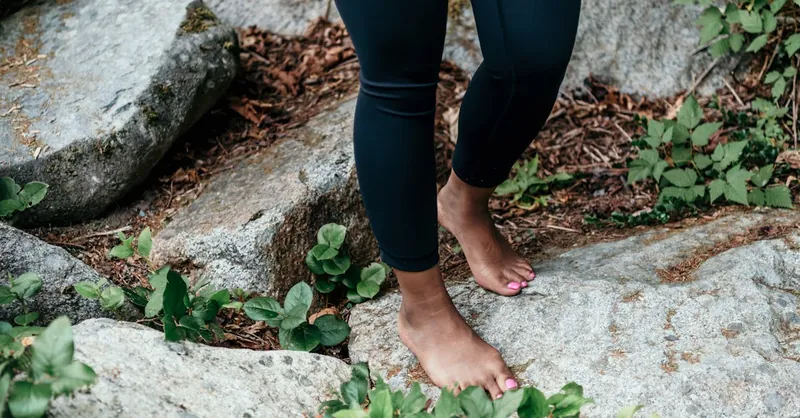
Image courtesy of PNW Production
Sustaining Minimalism Long-Term: Strategies for Maintaining Minimalist Principles Amidst Life Changes
Embracing minimalism is a transformative process, but sustaining minimalist principles over the long term requires ongoing commitment, especially as life circumstances evolve. Whether experiencing career shifts, family growth, relocation, or changing priorities, it’s common to face challenges that tempt a return to consumerist habits. The key to maintaining minimalism lies in adopting flexible strategies that accommodate change without sacrificing your core values of intentionality, simplicity, and mindful consumption.
Core Strategies to Maintain Minimalism Through Life’s Transitions
-
Regularly Revisit Your ‘Why’
Continuously reconnect with your foundational motivations for choosing minimalism. Reflecting on how simplicity improves your well-being, finances, or environment strengthens resilience against impulsive buying or lifestyle overload. -
Adopt a Flexible Mindset
Understand that minimalism is an evolving journey, not a rigid set of rules. Life stages may require adjustments—such as temporarily acquiring needed items for children or work—without abandoning minimalist intentions. Flexibility fosters sustainability. -
Create Routine Check-Ins and Reset Periods
Schedule periodic evaluations of your belongings, habits, and commitments, ideally seasonally or annually. These check-ins help catch creeping clutter or overspending early, enabling course corrections before overwhelm accumulates. -
Cultivate a Supportive Environment
Surround yourself with like-minded communities, whether local groups or online minimalism forums, for encouragement and accountability. Sharing experiences and strategies equips you to handle challenges while reinforcing your lifestyle. -
Practice Intentional Consumption at Every Stage
Stay vigilant about purchases and commitments, even during busy or stressful times. Apply mindful consumption principles consistently to prevent slipping into convenience-driven overconsumption during life transitions. -
Prioritize Self-Compassion and Patience
Recognize that setbacks or periods of excess can happen without negating your minimalist progress. Treat yourself with kindness, learn from experiences, and recommit to your simplicity goals without guilt.
By integrating these sustained strategies, you embed minimalism not as a temporary fix but as a lifelong approach adaptable to change. This proactive maintenance guards against resurgence of consumerism’s grip, allowing your simplified, intentional lifestyle to flourish regardless of evolving personal or external circumstances. Ultimately, sustaining minimalism long-term empowers you to live with clarity, purpose, and freedom intertwined through all chapters of life.

Image courtesy of Polina Tankilevitch
Finding Community and Inspiration: Connecting with Minimalist Communities to Stay Motivated
Embarking on the journey from consumerism to minimalism can feel isolating at times, especially when surrounded by a culture that celebrates acquisition and excess. Finding community and inspiration is essential to sustain your momentum, deepen your understanding, and reinforce your commitment to a minimalist lifestyle. By connecting with like-minded individuals and accessing valuable resources, you create a supportive environment that encourages growth, accountability, and shared learning.
Ways to Connect with Minimalist Communities
-
Join Online Minimalism Forums and Social Media Groups
Platforms such as Reddit’s r/minimalism, Facebook minimalist groups, and Instagram accounts dedicated to simple living provide spaces to ask questions, share progress, and discover tips. Engaging in these communities fosters a sense of belonging and continuous motivation. -
Participate in Local Meetups or Workshops
Many cities have minimalist or zero-waste meetups, workshops, or book clubs that facilitate face-to-face connections. Attending these events allows you to exchange ideas, find accountability partners, and gain practical support on your minimalist journey. -
Follow Thought Leaders and Bloggers
Inspirational minimalist bloggers, podcasters, and YouTube creators share personal stories, strategies, and insights that can empower your own transition. Regular exposure to minimalist content keeps your mindset aligned with your goals amidst societal noise. -
Engage with Sustainability and Decluttering Challenges
Joining challenges like “30 Days of Minimalism” or decluttering marathons can provide structure and communal energy. These events often include daily prompts, shared check-ins, and celebratory milestones that keep motivation high.
Accessing Resources to Deepen Your Minimalism Practice
- Read Books and Articles on Minimalism — Dive into foundational texts and current writings that explore beyond physical decluttering to emotional and philosophical aspects of minimalism.
- Utilize Minimalism Apps and Tools — Apps focused on habit tracking, mindful buying, or financial planning can support intentional living.
- Subscribe to Newsletters and Podcasts — Curated content delivers fresh ideas and inspiration directly to your inbox, helping you stay informed and engaged.
Building connections with a supportive minimalist community and leveraging rich resources transforms the minimalist transition into a shared, enriching experience. These relationships and tools not only sustain motivation but also expand your perspective, making the journey from consumerism to minimalism more enjoyable, informed, and enduring. Embrace this collaborative aspect to reinforce your simplified lifestyle with continual encouragement and meaningful insights.
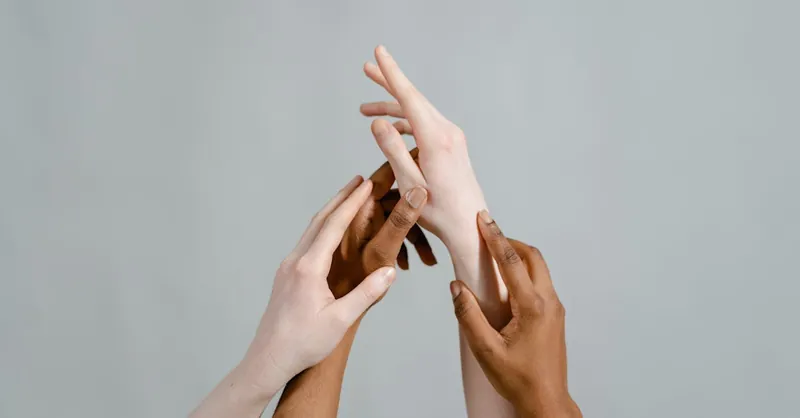
Image courtesy of Tima Miroshnichenko
